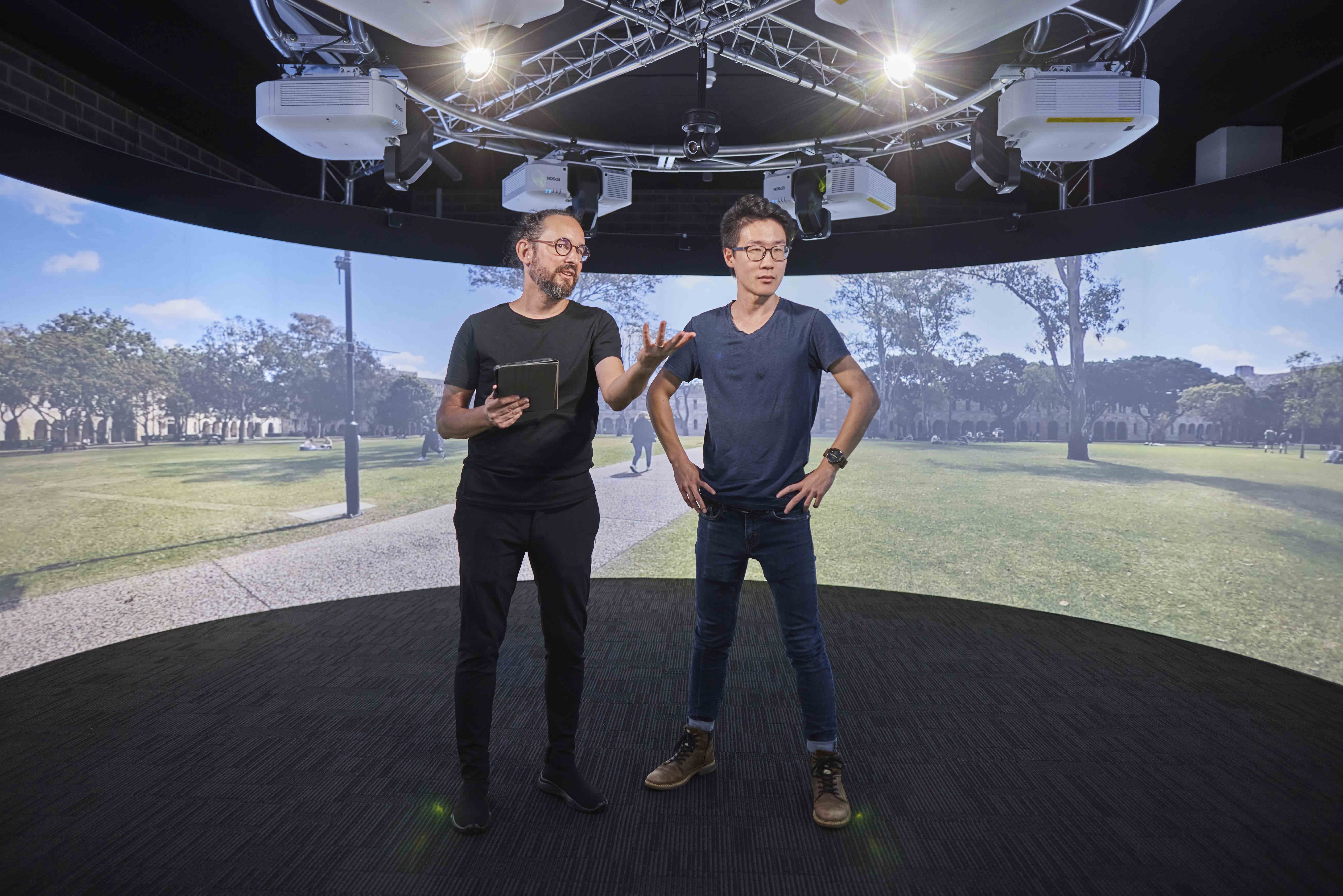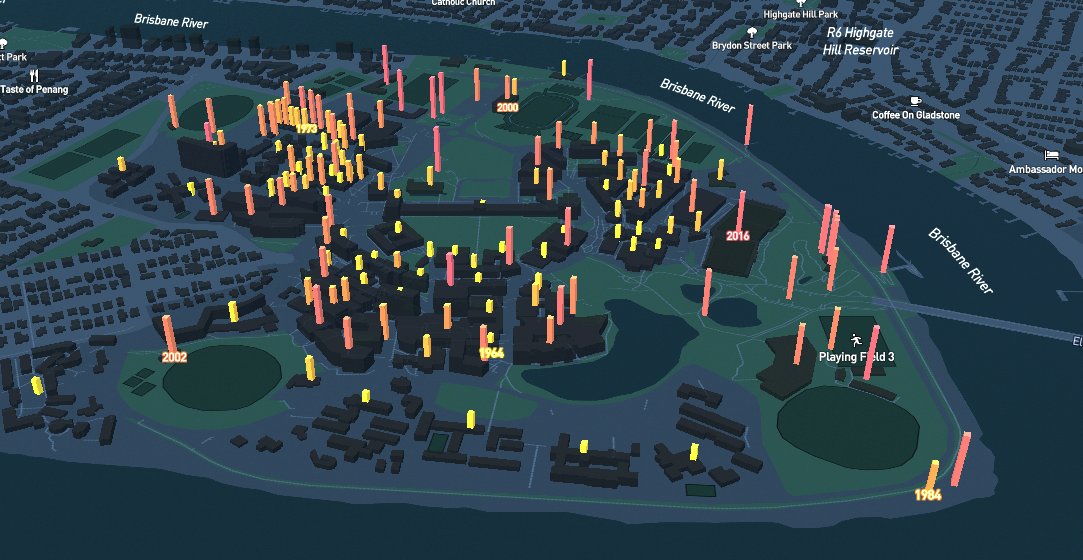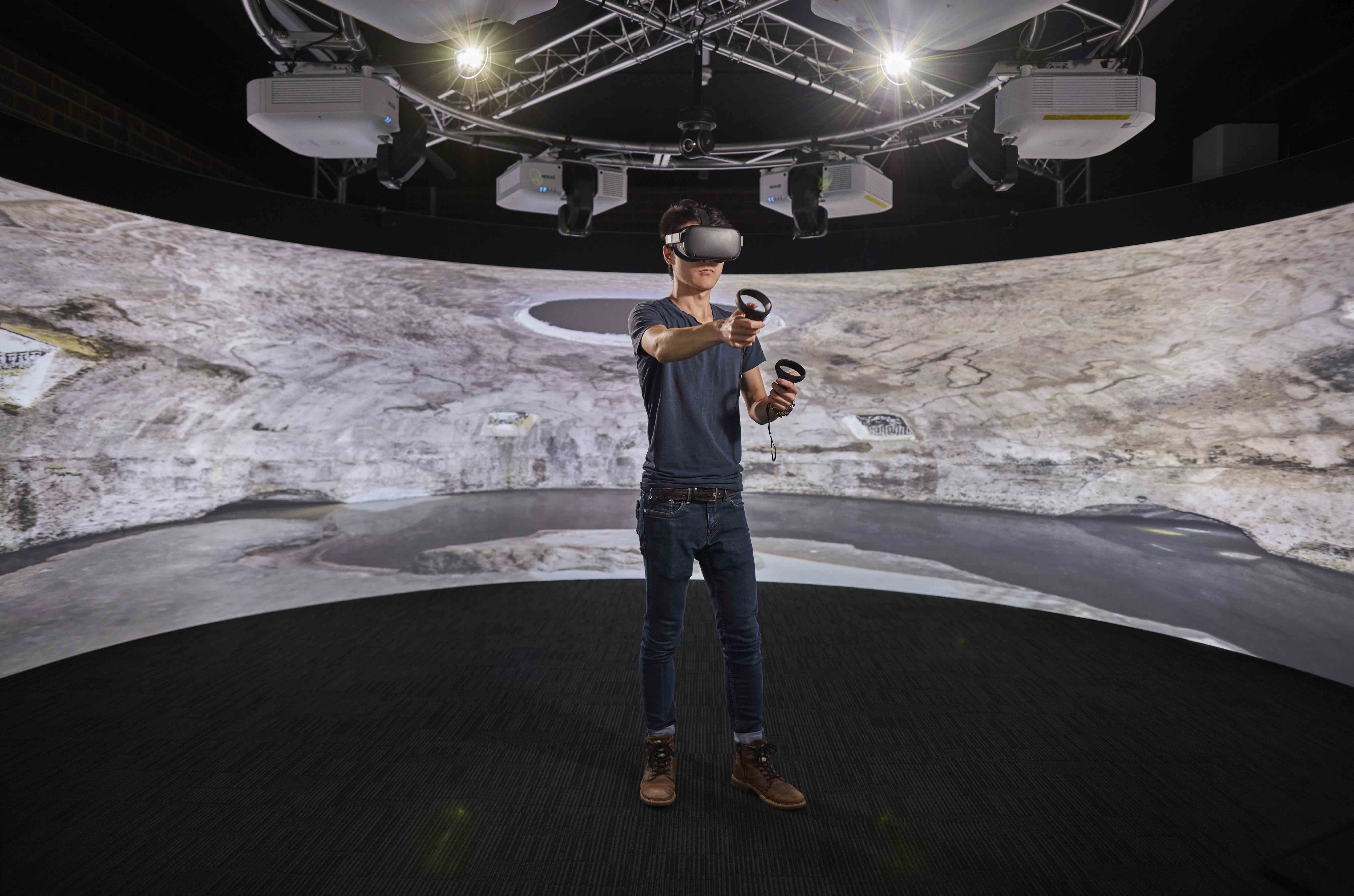Expanded research by Dr Fred Fialho Teixeira is set to put The University of Queensland at the forefront of digital twin development, revolutionising the way digital spaces are understood.
Dr Fialho Teixeira, a senior lecturer in the School of Architecture, Design and Planning, is committed to creating a highly adaptive, intelligent digital twin system that not only informs, but also actively interacts with spatial and environmental data – which he says would make UQ a leader in digital twin applications for research, infrastructure management and educational innovation.
The Digital Twin of UQ St Lucia Campus was initiated in 2021 as part of Designing the Next Generation of Built Environments, a suite of projects funded by the Federal Government’s Research Support Package. For that iteration of the UQ digital twin, existing data from various locations at St Lucia Campus was utilised, and new data generated, to model, simulate and forecast changes around campus.
Dr Fialho Teixeira is now further developing the scope of the digital twin to include machine-learning-driven decision-making (in other words, using algorithms trained on data to identify patterns and make recommendations), and interactive spatial experiences (where users can actively participate and influence the content or outcome within a virtual space).

“This next phase focuses on expanding the taxonomy of the digital twin to include a versatile data bank, a synthetic environment, and advanced asset management capabilities,” he said.
“It also involves refining the synthetic environment to simulate and overlay real-time data, further enhancing predictive modelling and autonomous interventions.”
A “digital twin” is a virtual model of something that exists in the physical world, achieved using virtual reality and augmented reality technologies. It is composed of a physical entity in real space, the digital twin in software form, and data that links the first two elements together.
The Digital Twin of UQ St Lucia Campus integrates historical, real-time and predictive data to inform models such as flood simulations, mobility around campus and how it’s affected by construction, building occupancy assessment with spatial data, and mapping of building age in relation to campus infrastructure.
Dr Fialho Teixeira explained that the digital twin could provide numerous benefits, including:
- Improved infrastructure management through predictive analytics
- Enhanced research capabilities in digital humanities, engineering and design
- A platform for experiential learning and digital literacy development
- Greater efficiency in spatial planning and asset optimisation
- Democratisation of spatial data, ensuring equitable access to critical information.
“The digital twin serves as a non-invasive tool for cognitive and experiential simulations, which is important because it allows designers, researchers and asset managers to interact dynamically with space,” he said.
“In terms of enabling greater efficiency in spatial planning and asset optimisation, an example is the capacity to see how buildings operate in regards to energy consumption and occupancy.
“In the Digital Twin of UQ St Lucia Campus, we can see annually when our buildings are at low occupancy rates and still have high consumption of energy. This helps make decisions and predict scenarios on how and when we can reduce high consumption systems such as air-conditioning according to the time of the day, week or year.”

Dr Fialho Teixeira was inspired to create the Digital Twin of UQ St Lucia Campus after identifying a need for a more integrated, responsive and interactive digital representation of the built environment. Working with a multidisciplinary team of collaborators from the engineering, IT, management and architecture domains, he aimed to bridge the gap between physical spaces and their digital counterparts. The project is driven by a vision of spatial computing, digital literacy, and the democratisation of spatial data to prevent “techno-feudalism” and digital colonialism, he said.
In 2024, Dr Fialho Teixeira co-authored a chapter titled “Integrating Digital Twins in Urban Sustainability: A Framework for University Campus Applications,” as part of the book Digital Twin Computing for Urban Intelligence, published by Springer. The chapter proposes an innovative framework for integrating digital twins into university campus management, potentially extending its application to a variety of built environments.
At UQ’s St Lucia Campus, the digital twin has already facilitated the discovery of key opportunities for efficiency in campus management, such as the use of 3D point-clouds for UQ’s Property and Facilities Division, and the development of reproducible workflows to enable adaptation at scale. It has also presented a pilot study for application of spatially enabled digital twins at the urban scale.
“One exciting aspect of the next phase of the project is the development of the Remote Operations Service Experience (R.O.S.E.), which makes it easy for different parts of a distributed application [a software system that runs on multiple devices but works together as a single system] to work together smoothly,” Dr Fialho Teixeira said.
“Additionally, the project’s focus on synthetic environments enables immersive and non-invasive spatial simulations, revolutionising the way digital spaces are understood and utilised.”
The Digital Twin of UQ St Lucia Campus project team was Dr Fred Fialho Teixeira, Kelton Boyter-Grant, Christian Dost, Dr Jurij Karlovsek, Dr Islam Mashaly, Dr Maryam Shafiei, Ben Ziegenfusz, Qianbin Xu and Guanqi Zhu.
Students and researchers can investigate complex architectural, engineering and urban design problems through an immersive experience of digital twins in The University of Queensland’s cutting-edge Visualisation Laboratory.




